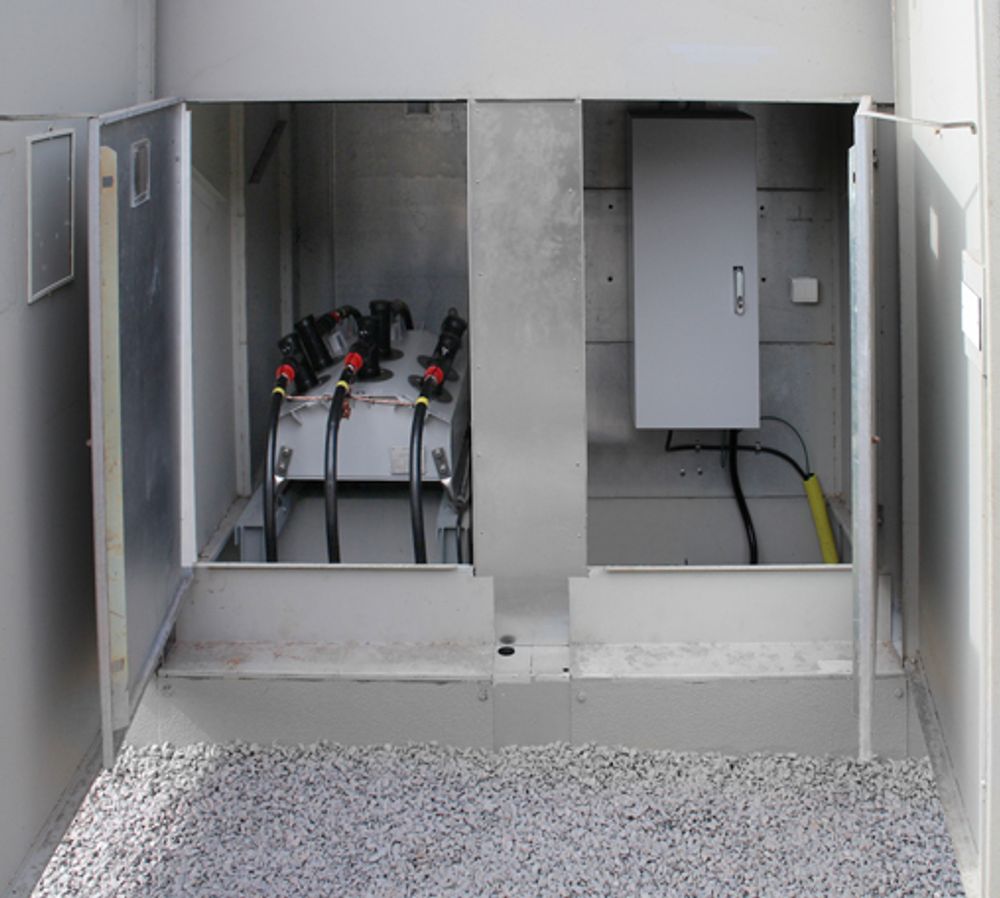Comunicados
Publicado 07/2015
NOJA Power 310 series Automatic Circuit Recloser’s DIN taper bushings simplify ground-level installations
Industry-standard bushings on 310 series ACR allow linesmen to use dead break elbow connectors to ease installation and maintenance work on underground-to-overground grid transitions.

Electrical switchgear engineers NOJA Power today announces the fitment of DIN taper bushings to all its OSM15 and OSM27 310 series Automatic Circuit Reclosers (ACR or “auto-recloser”). The bushings are a standard fitment to the ACR and comply with the DIN EN 50181 (Interface Type C) specification [1].
DIN taper bushings extend the range of applications for which the 310 series ACR can be used by enabling the use of dead break elbows to connect insulated conductors to the equipment.
A typical application is for the transition between a metropolitan electricity distribution network sited underground and an overground grid used to service a rural area. An enclosure houses the transition between the underground and overhead networks - which are connected across an ACR to protect the grids. The dead break elbows are fitted to the end of the insulated conductors and then placed directly onto the ACR’s DIN taper bushings and secured. A key advantage of this arrangement is that linesmen are not required to work with uninsulated conductors (although the usual safety standards associated with work on medium-voltage distribution networks must be followed).
The 310 series was introduced in 2012. The OSM15 version features a rated maximum voltage of 15.5 kV, fault break capacity of 16 kA and rated maximum continuous current of 800 A. Comparable figures for the OSM27 are 27 kV, 12.5 kA and 800 A. The ACRs are suitable for use in a wider range of electrical network configuration options for conventional grids and smart grids. The OSM15 units have been type tested by independent test laboratory DNV GL KEMA for short time withstand current test of 16 kA for three seconds.
For pole-mount applications, the 310 series is supplied with silicone rubber bushing boots fitted over the DIN taper bushings enabling connection of the uninsulated conductors used on overhead distribution systems.
NOJA Power also offers a ground mount kiosk (GMK) to enclose ground-level installations. The GMK takes advantage of the 310 series dead break elbow capability by eliminating the copper busbars and cable-connection bulkhead required in kiosks housing ACRs with non-DIN taper compliant bushings. This results in a more compact kiosk.
“As fundamental components of smart grids we are seeing our ACRs replacing older switchgear for an increasing number of ground-level applications,” says Neil O’Sullivan, NOJA Power’s Managing Director. “We have designed the 310 series auto-recloser with this application in mind. The unit’s high-maximum interrupt rating and -maximum continuous current rating make it suitable for a wide range of implementations, and the DIN taper bushings make ground-level installation easier. When housed in the company’s compact GMK, the 310 series auto-recloser is an ideal solution for protection of underground grids.”
NOJA Power’s OSM15 310 series products benefit from the use of a vacuum interrupt and solid dielectric insulator instead of the environmentally unfriendly oil or sulphur hexafluoride (SF6) gas used in older products. Another key feature of the OSM15 310 series is its stainless steel enclosure that forms the only solid dielectric unit with controlled arc venting on the market. The controlled arc venting design meets the requirements of IEC62271-200 Clause 6.106 and Annex A, and the efficacy of this important safety feature has previously been verified as part of the type-testing certification.
Quer manter-se atualizado sobre a Tecnologia de Distribuição Energia?
Inscreva-se na nossa lista para um boletim técnico semanal gratuito, pois compartilhamos nossa experiência em Engenharia Elétrica Global diretamente em sua caixa de entrada
Inscreva-se →